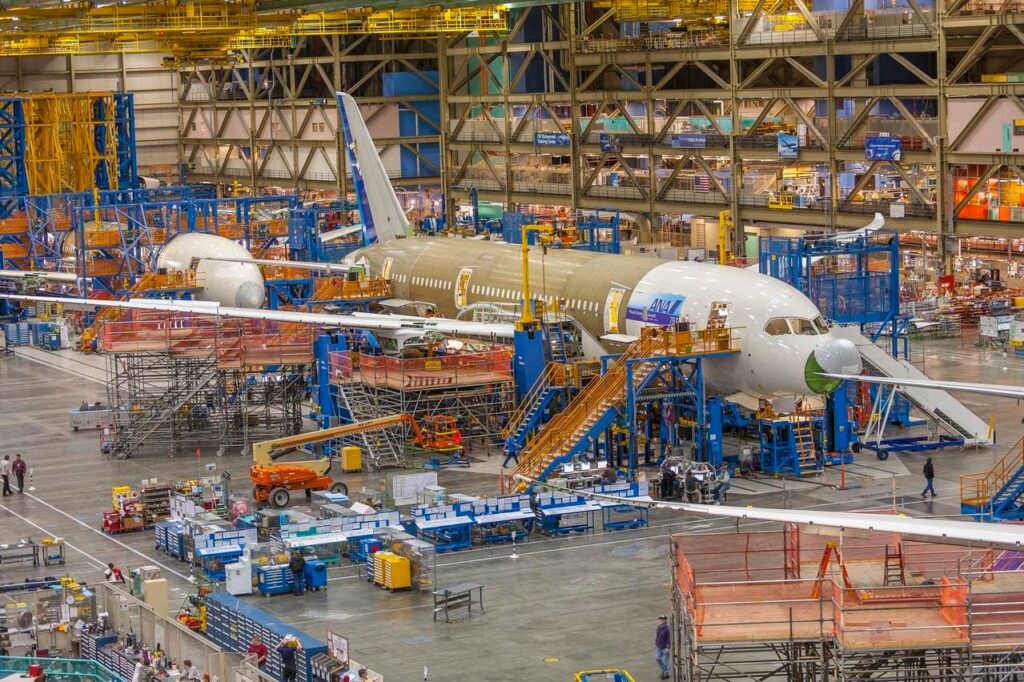Boeing, once revered as a pinnacle of American aerospace innovation, now finds itself ensnared in profound difficulties that threaten its financial stability and investor confidence. The company has witnessed a dramatic decline in its stock value, primarily driven by manufacturing discrepancies, quality control failures, and a slow erosion of trust within the market. The catastrophic failures associated with the 737 MAX aircraft, which resulted in the tragic loss of 349 lives, underscored significant governance and safety issues within the organization. This sequence of events has triggered a wave of financial losses and manufacturing delays, dramatically tarnishing its previous reputation as an industry leader. As the share prices plunge—43% year-to-date—Boeing’s internal workers are increasingly voicing their desperation for a transformative measure: a complete corporate breakup.
In a striking development, influential managers within Boeing have rallied behind the idea of dismantling the conglomerate into four distinct divisions: commercial airplanes, defense, space and security, and global services. This internal momentum, sparked by a letter from the workforce advocating for a corporate separation, highlights the urgency for change. Employees are recognizing an inherent misalignment between Boeing’s operational structure and its market objectives. Their push for a breakup emphasizes that the current heavyweight structure not only stifles productivity and responsiveness but also undermines Boeing’s competitive edge. This unprecedented alignment of internal and external voices presents a pivotal moment for the company’s leadership to initiate a necessary transformation.
The case for a Boeing breakup is further bolstered by the analytical insights of investment firms like The Edge Consulting Group, which predicts a remarkable 100% increase in Boeing’s stock value following such a separation. By allowing each division to concentrate on its core competencies and streamline processes, the potential for enhanced profitability and operational efficiency emerges. This conceptual framework mirrors the recent restructuring strategy employed by companies like General Electric, which successfully leveraged division-specific focuses to revitalize shareholder value following its split into independent entities.
Employee sentiment is rapidly gaining traction as a compelling driver for change within Boeing. Ground-level workers, who understand the operational challenges inherent to the organization, are reporting inefficiencies stemming from bureaucratic red tape and massive corporate structures. Their endorsement of a structural overhaul reflects their vision for a more agile and consumer-focused company—all motivated by the desire to restore Boeing’s market resilience and competitiveness. Ignoring this unique opportunity for reform could risk alienating essential stakeholders and stifling the very lifeblood of innovative potential that once propelled the company forward.
As Boeing navigates these turbulent waters, it stands at a critical juncture where the urge for a breakup is not merely a strategic option but an imperative for survival. Recent failures of companies like Intel, which have struggled due to outdated operational frameworks, illustrate the dangers of stagnation. Conversely, the successful case of General Electric serves as an inspirational model for Boeing, demonstrating the benefits of agility and operational clarity that can emerge from a well-structured separation. By recognizing the transformative potential of a breakup, Boeing can successfully pivot toward a more dynamic organization tailored to the demands of modern aerospace industries.
Boeing’s legacy of innovation, commitment, and excellence in aerospace manufacturing rests precariously on this crossroad. Employees who helped build its illustrious history are now asserting that its current structure is stifling potential, creativity, and efficiency. The overwhelming desire for a breakup reflects their commitment to preserving Boeing’s historical standing as a market leader. As the company faces increasing pressure to reimagine its strategic approach, it is crucial that Boeing leadership embraces this call for reform rather than risking stagnation and decline. The potential for rejuvenation is palpable; therefore, a decisive shift towards a breakup could serve as the catalyst for revitalizing the Boeing brand and restoring its rightful position in the aerospace realm. Time is of the essence—Boeing’s future depends on taking decisive action now.

